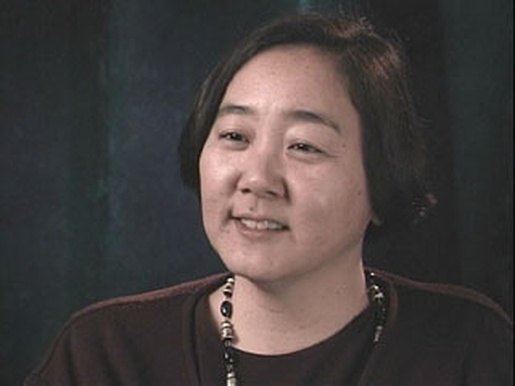

Japanese American Women and Activism Within the JA Community: Redress, Reparations, and Gender
 cshikai
cshikai
|

|
||
| Licensing | ||
Lorraine Bannai, Introduction
As a Sansei born in Gardena, California in 1955, Lorraine Bannai had a somewhat different experience in the Redress and Reparations movement. Too young to have experienced the camps, Lorraine became aware of Japanese American history both through her family, and her experiences in school. She had a keen consciousness about her identity as a Japanese American, and as a person of color, seemingly cultivated by the unusually prominent demographic of Japanese Americans in the neighborhood where she was raised.
In her interview, Lorraine expresses very affectionate feelings towards her grandparents, both paternal and maternal, who, both through discussion and action alone, showed her the ways of Japanese American tradition and values. Her mother was also a strong role model figure in her life, one who inspired Lorraine to pursue her desires despite what others thought. Although she could not speak Japanese, by observing those around her she grew up with a thorough understanding of what it meant to be JA.
In junior high school, she was surrounded by events like the Vietnam War protests and those stemming from later phases of the Civil Rights Movement, all of which sparked the beginnings of progressivism in Lorraine’s mind. Entering law school further expanded this consciousness, concerning race and political activism, where she directly participated in rallies around such issues as Affirmative Action.
With the reopening of the Fred Korematsu case in 1983, Lorraine, now a newly accredited attorney, joined the team and was a part of the victory that ended up in this coram nobis case having the original conviction vacated. Amidst her legal experiences, Lorraine was also aware of her own position as an Asian American woman, and the external perceptions of pertaining to race and gender combined. She felt that others would judge her as the quiet stereotype, and oftentimes was assumed to be a clerk or a recorder, not an attorney. Obviously, by people, both of color and white, made assumptions about her race and gender. So she put forth the extra effort to ensure that she proved them wrong.
But when questioned about how gender played out in the wider processes involved in Redress and Reparations and the coram nobis cases, Lorraine did not give an answer, indicating she was not able to formulate a proper response she would be comfortable with. This is indicative of the attitudes and perspectives of the other three Japanese American women as well, as although it seems they were often aware of their own gender and/or race and how it affected their own position in contexts outside of the Japanese American community, they were not as conscious of how gender was perceived in areas like Redress, where the JA community worked so closely together.
Still, Lorraine’s experiences as a Sansei show a more complex, developed awareness about issues of race, social justice and activism that came about in her years, also indicating the difference that generation can make in the attitudes that are adopted about these matters according to time. This point of view also led her to constantly surround herself with like-minded people that she was able to learn from. Additionally, that perspective that she was able to bring to the table in the Korematsu case shaped her as a very qualified and instrumental Japanese American woman whose contributions were necessary for the vacation of that conviction. And of course, without those coram nobis cases, Redress would not have been possible.
Source: Densho Digital Archive, http://archive.densho.org/main.aspx. Visual History Collections: Densho Visual History Collection, Lorraine Bannai Interviews.
Based on this original

|
Lorraine Bannai, Introduction |
 Japanese American Women and Activism Within the JA Community: Redress, Reparations, and Gender
Japanese American Women and Activism Within the JA Community: Redress, Reparations, and Gender
 Journal feed
Journal feed
